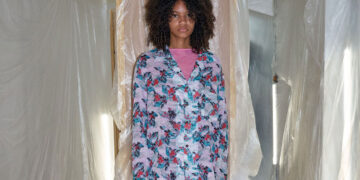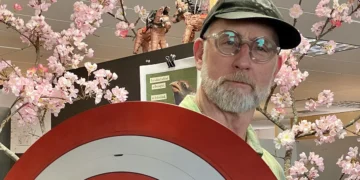
Teppei Fujita, the creative force behind Sulvam, known for his unique approach to tailoring and exploration of new design territories. His collections blend casual and formal elements with innovative materials, resulting in distinctive and timeless pieces. From his early days as a solo designer to leading a cohesive team, Fujita’s journey reflects his unwavering commitment to pushing the boundaries of fashion. From his beginnings as an independent designer to his current role as a team leader, Fujita’s career embodies his ambition to challenge fashion norms.
INTERVIEWS
In this exclusive interview by Anastasija Pavic, Fujita opens up about his love for expressing emotions through fashion, the difficulty of adapting to contemporary trends, and the creative process behind his latest collection, “Not Afraid.” He highlights his unique strategies, such as using innovative Japanese denim and vibrant knitwear. Additionally, Fujita talks about introducing Sulvam’s new women’s line and his vision for the next generation of designers.
What do you enjoy most about the process of creating a new collection, and what do you find most challenging?
What I enjoy most is being able to express my emotions. What I find most difficult is seeing how much I can adapt to the current times.
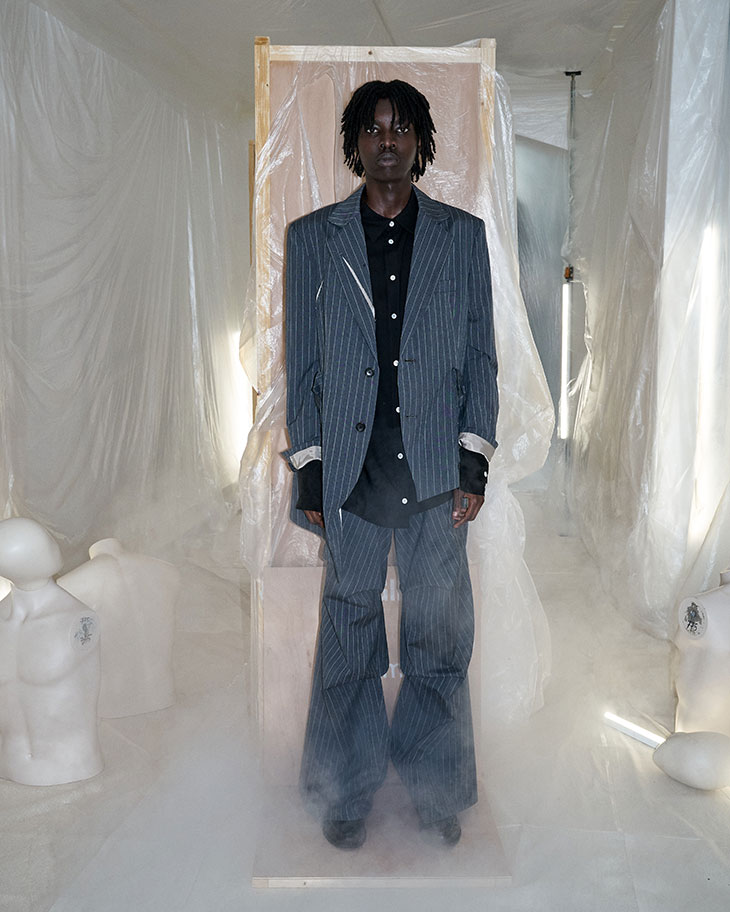
“Not Afraid” represents a significant shift from Sulvam’s usual aesthetic. What motivated you to take this new approach for the collection?
The collection is still focused on tailoring, it just doesn’t include many pieces with shoulder pads or other obvious tailoring elements. There are many designs I wanted to make so if I made too many tailored jackets I wouldn’t be able to make the other designs. So we changed our approach this season, and change can sometimes be scary when you’re used to doing things a certain way. However, I’ve come a long way from starting out by myself 10 years ago to now having a team of people who accept me. Since I realized that, I’m not afraid anymore.
What was your strategy for merging casual and formal wear in this collection?
The materials and cutting method. Even though many of the styles are casual, I have the concept of tailoring in my head, and from that I make my patterns.
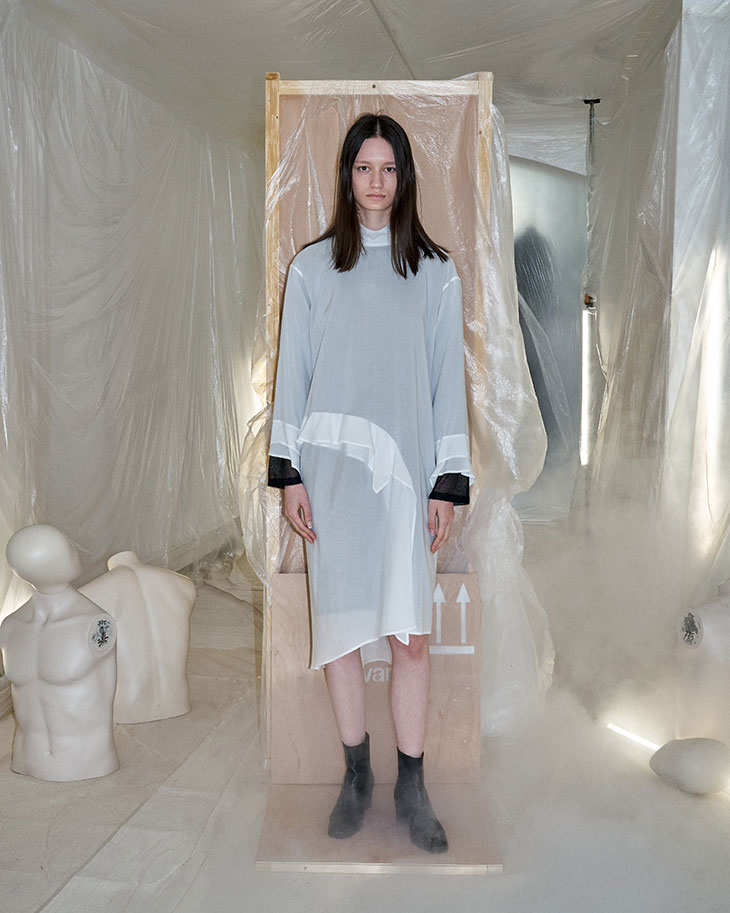
The denim pieces in this collection are particularly unique, especially the discharge-printed patterns reminiscent of European paintings. How did you come up with this idea?
This material was inspired by an old book I had of European paintings. The material and processing were done by a traditional Japanese discharge printing method called “nukizome”. If I had used a Japanese style pattern instead, I think it would’ve come out as a very traditional looking Japanese denim.
You’ve introduced innovative Japanese denim developed from a polyester blend. What led you to experiment with this material, and how does it enhance the collection?
Over recent years, polyester has been evolving to become more and more sustainable. There’s even eco-polyester now, and this polyester is no exception. Denim can emit this luster-type finish not only when you use cotton yarn but also this material. I think overall we showed that you can make a simple design even if the material stands out.
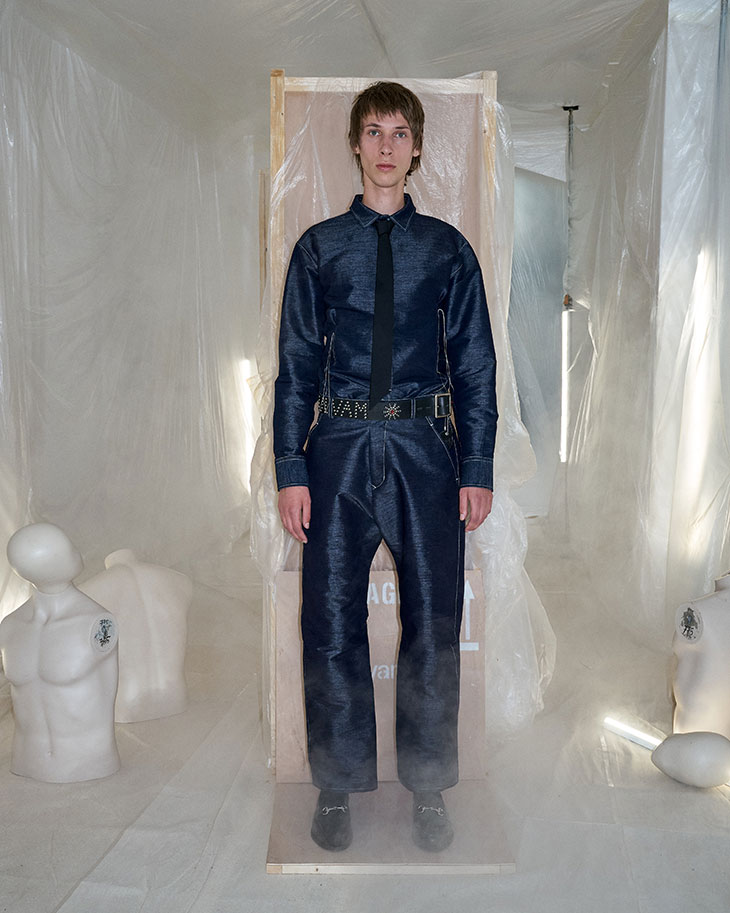
What inspired the use of bold colors in the knitwear, and how do they enhance the collection’s theme?
I simply wanted to use bright colors for spring/summer. I also wanted to show that you can coordinate good looks even when you combine bright and dark colors.
The introduction of a new women’s line is a significant expansion. How did this influence your design process?
We have many women’s designs, it’s just that we are limited in how many we can make since we are a small brand. As a result, we made a basic tailored women’s line to start off, and will expand off of that in the future.
‘I’ve come to the point where I don’t pay attention to trends anymore. I just want to keep my feet on the ground and connect with my customers.‘
In what ways do your hobbies and interests outside of fashion impact your design work?
My hobbies mainly include motorcycles, cars, and tattoos, but these just help me to relax and don’t have an influence on my designs. However, I also recently became interested in teaching and education. A lot can be taught to future generations through design.
How do you want your work to be remembered by future generations?
I want to be remembered for making quality, timeless pieces.

With trends constantly evolving, in what ways do you envision Sulvam innovating and pushing limits moving forward?
I’ve come to the point where I don’t pay attention to trends anymore. I just want to keep my feet on the ground and connect with my customers. That’s how I usually think about pushing limits. I’m still innovating, but I think just in my own way.
